It surprised virtually nobody when the Tampa Bay Buccaneers used a high second-round pick in last month's draft to select a running back, particularly after they had released their primary ballcarrier of the past six years, Doug Martin, in February.
That doesn't mean, however, that the Buccaneers are in the midst of a full changing of the guard in the backfield. It was actually Peyton Barber, not Martin, who was the team's starting running back at the end of the 2017 season, and his career appears to be on an upward trajectory. Also returning are do-everything back Jacquizz Rodgers and – as of his re-signing right before the draft – pass-catching expert Charles Sims. Rounding out the crop of tailbacks the team appears set to take to training camp are February addition Dalton Crossan, a former undrafted free agent, and Shaun Wilson, a rookie signed out of Duke after this year's draft.
That's a mix of holdovers and newcomers, but most importantly it's a mix of styles. The Buccaneers didn't draft USC's Ronald Jones at number 38 overall because they wanted to replace Barber; they did so because they thought Jones and Barber would complement each other well. Jones, hopefully, will bring the big-play element back to a rushing attack that sorely lacked it last year, and the still-improving Barber adds thump and a wider skill set than some may realize.
When asked for his first impression of Jones after last weekend's rookie mini-camp and a few sessions on the field this week, Running Backs Coach Tim Spencer pointed first to the rookie's speed and quickness.
Pictures from Buccaneers practice on May 17th.
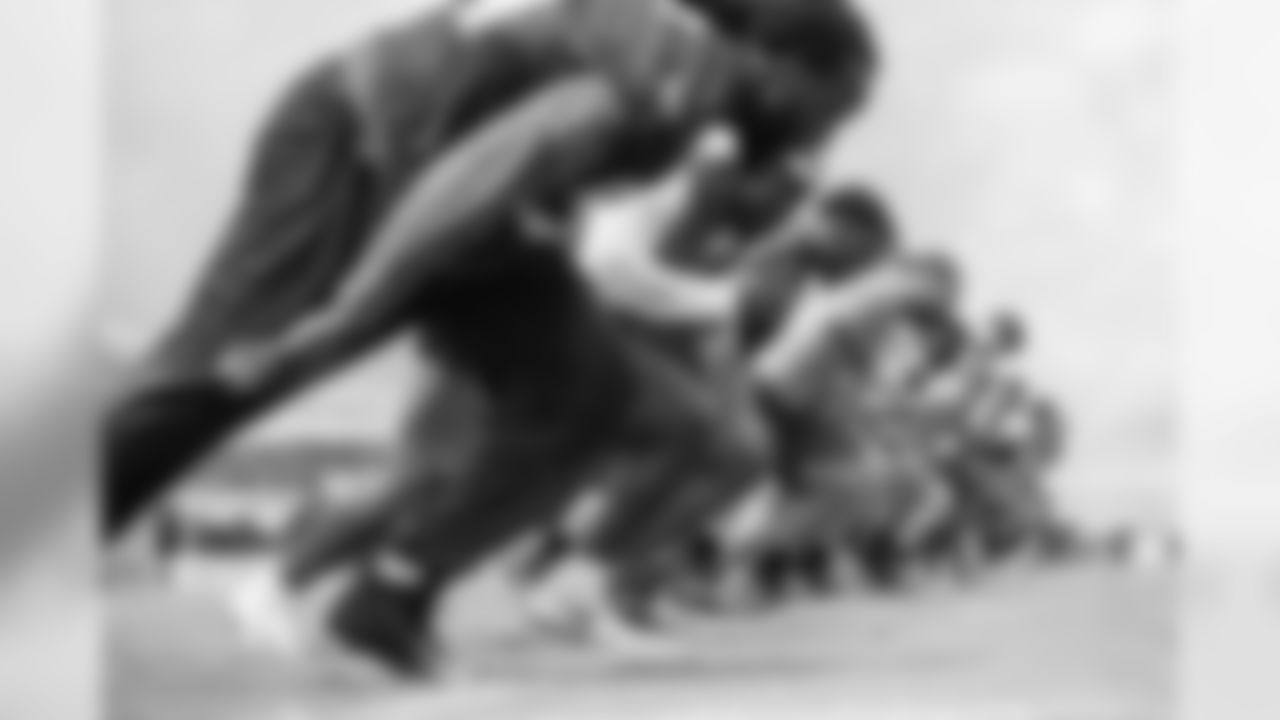

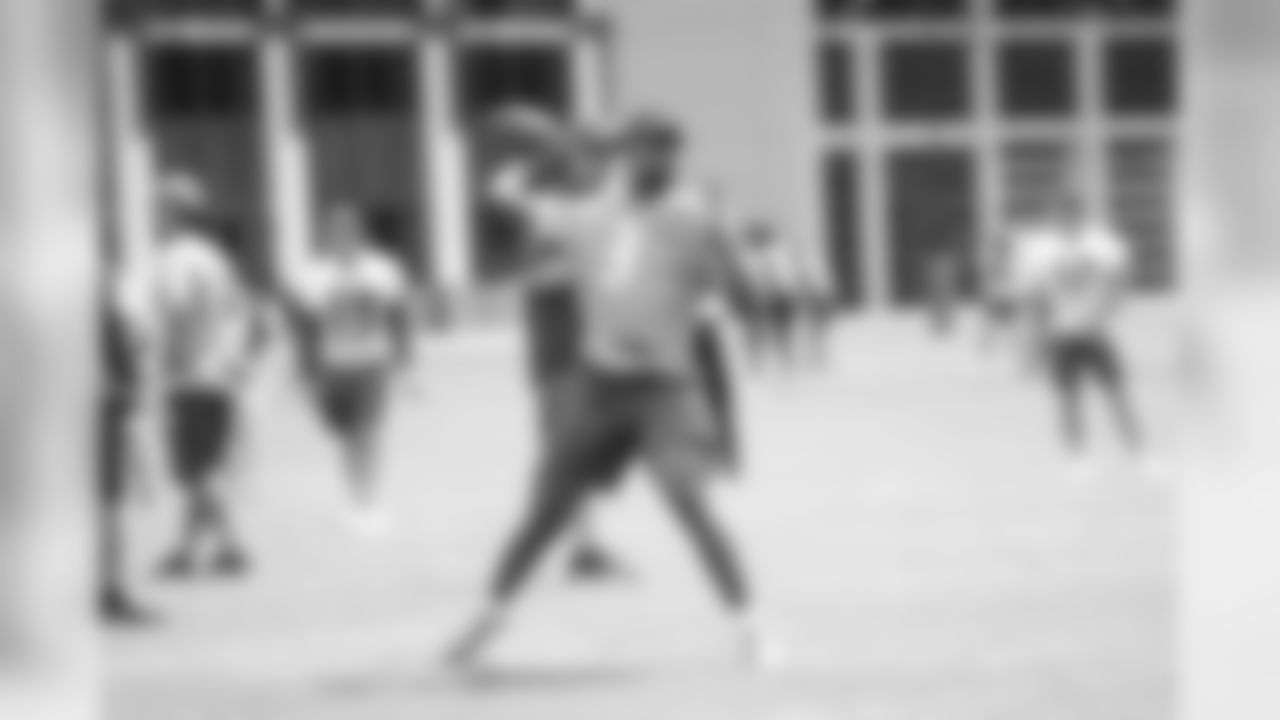

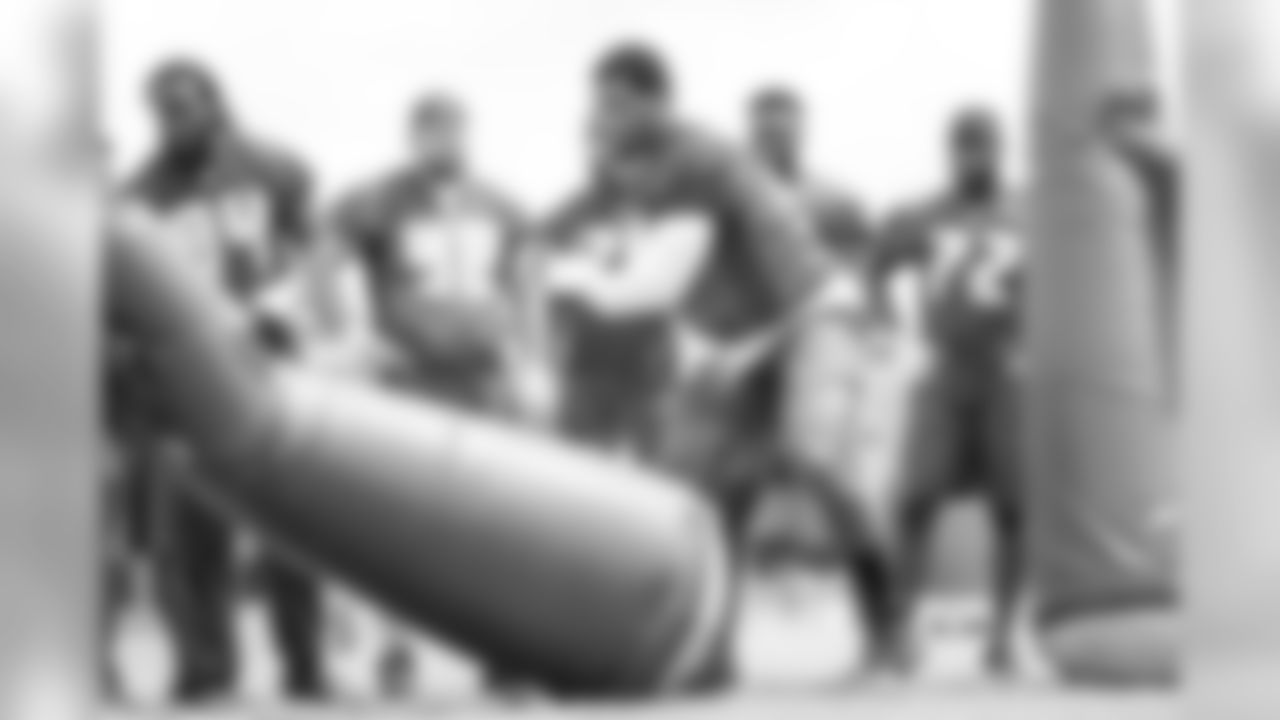
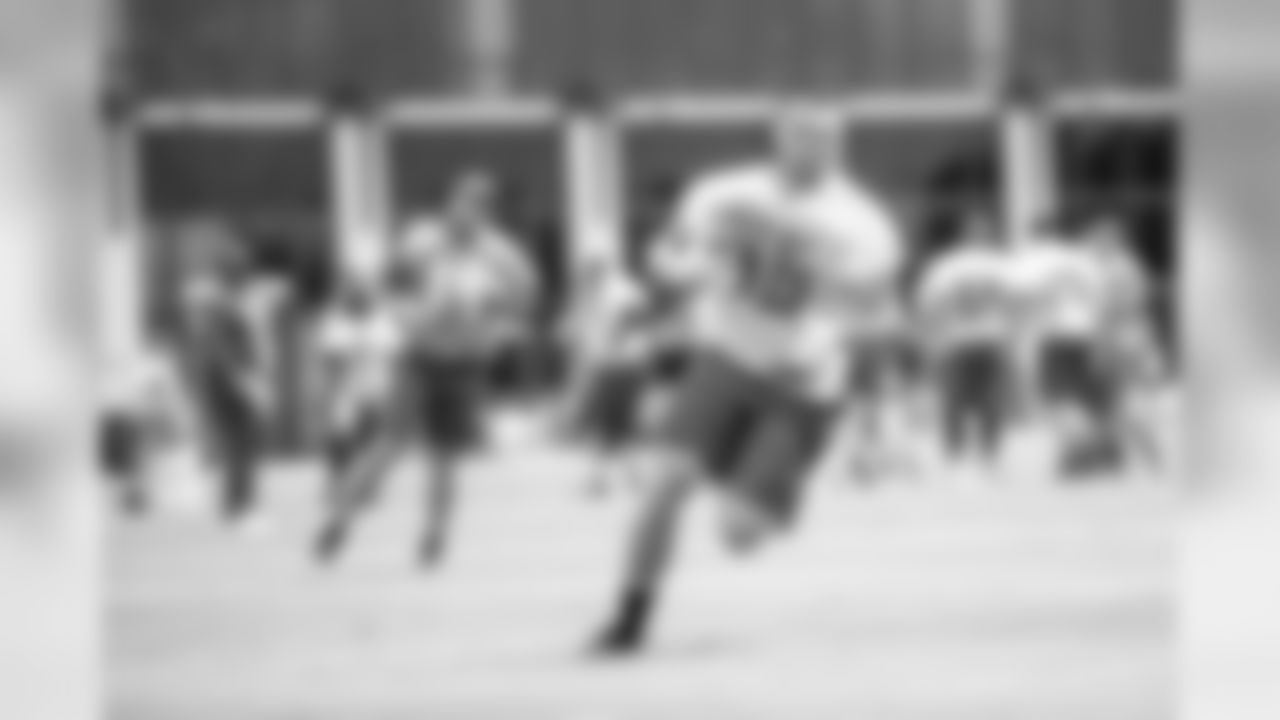
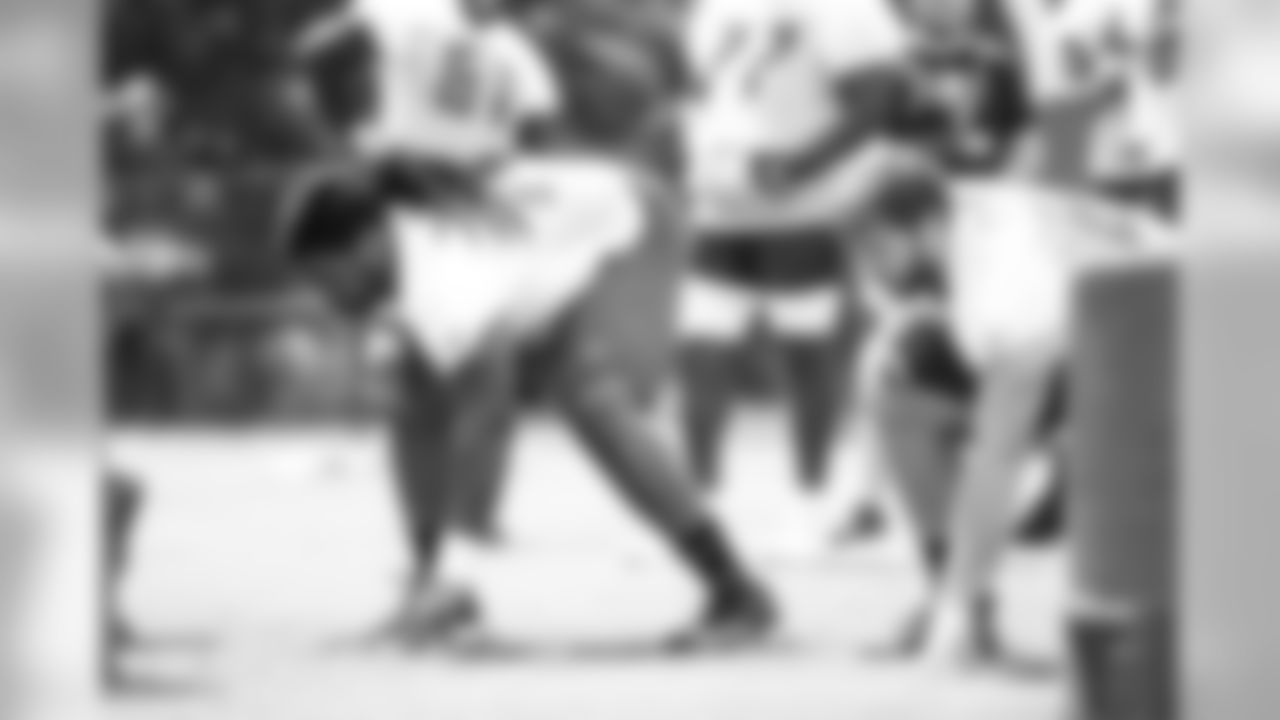

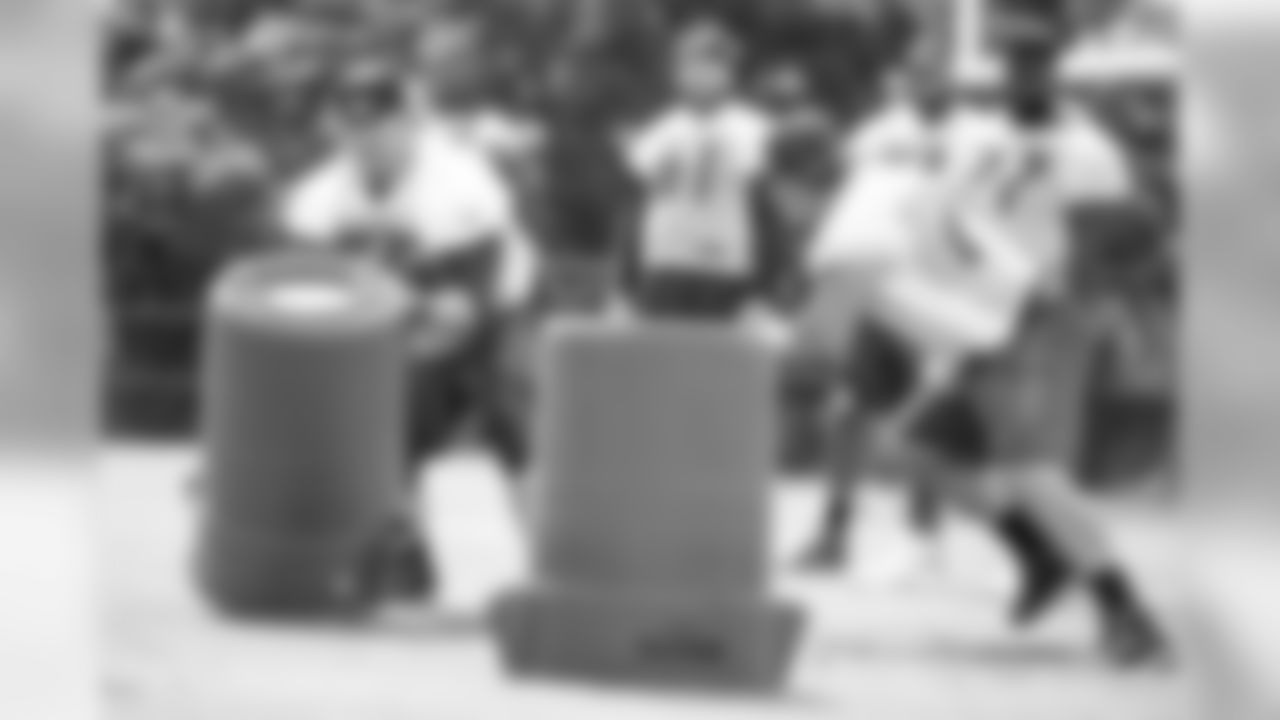
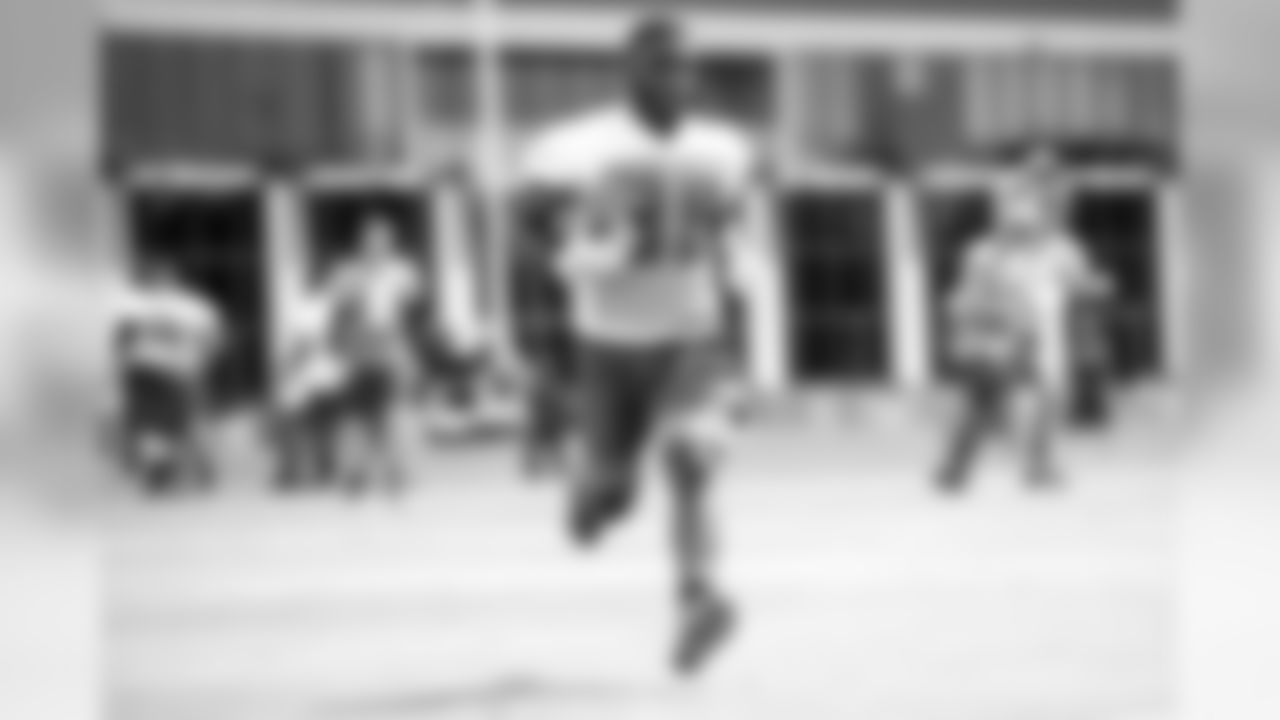
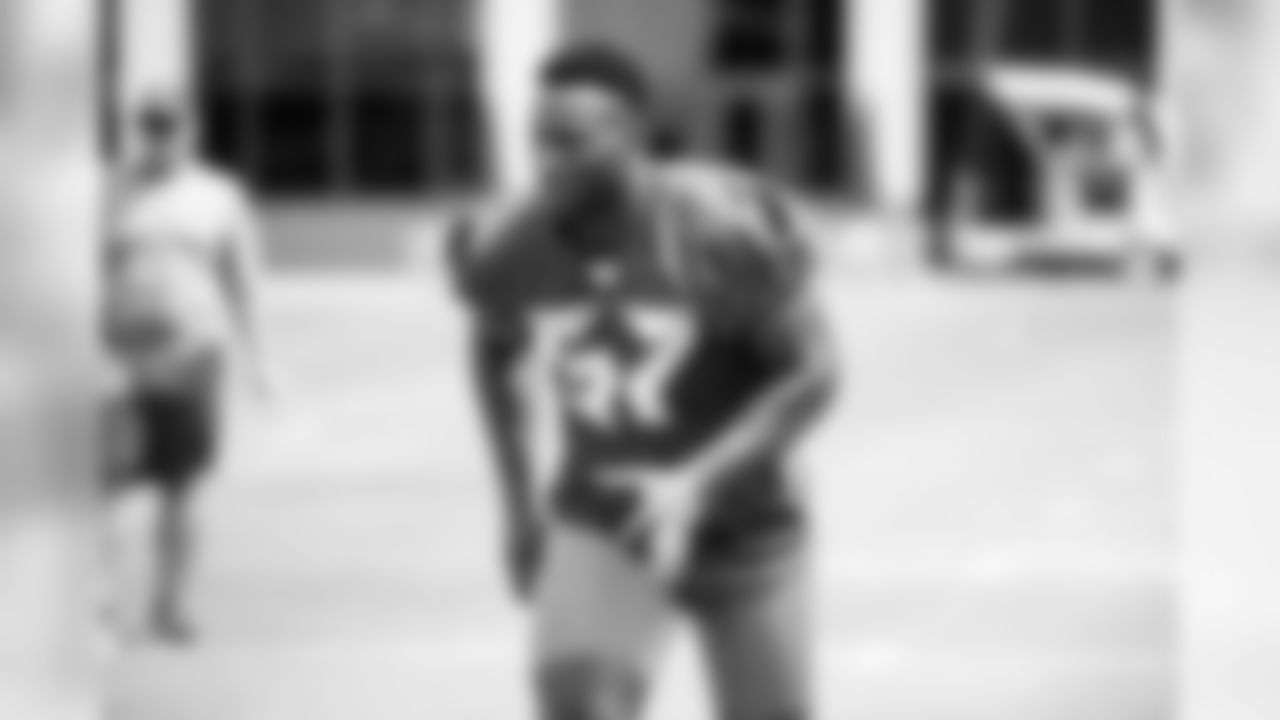

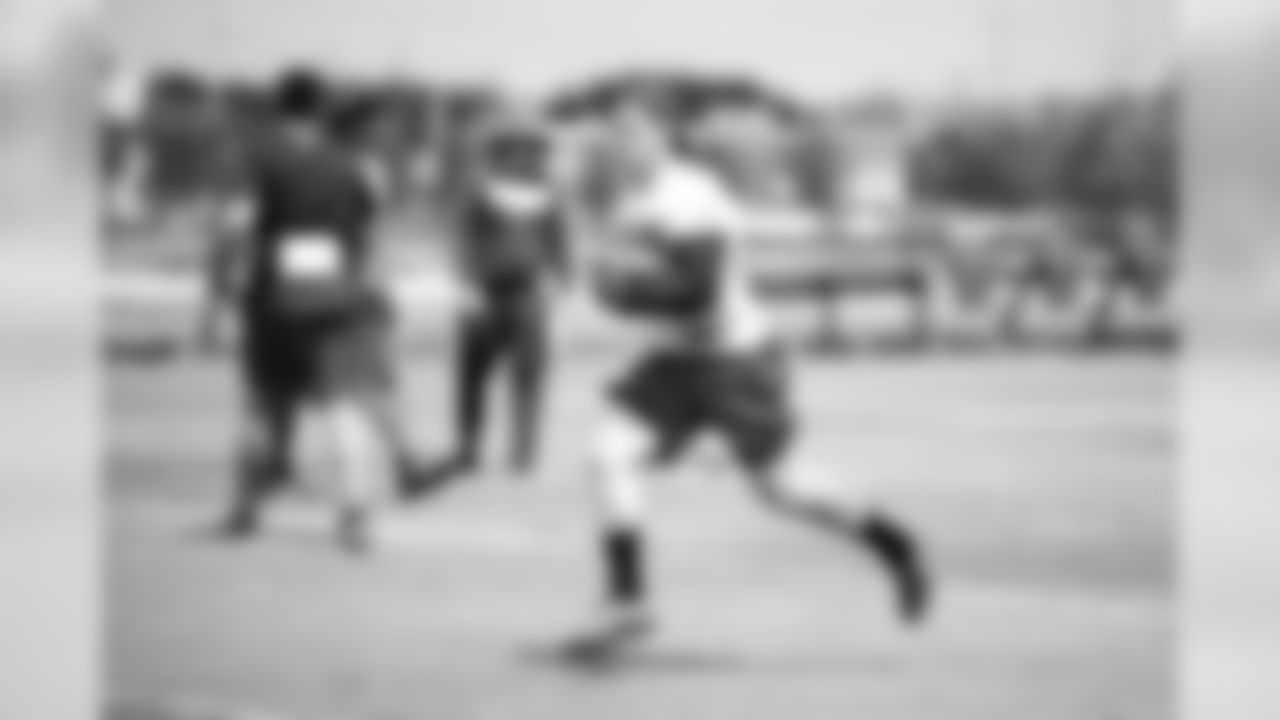

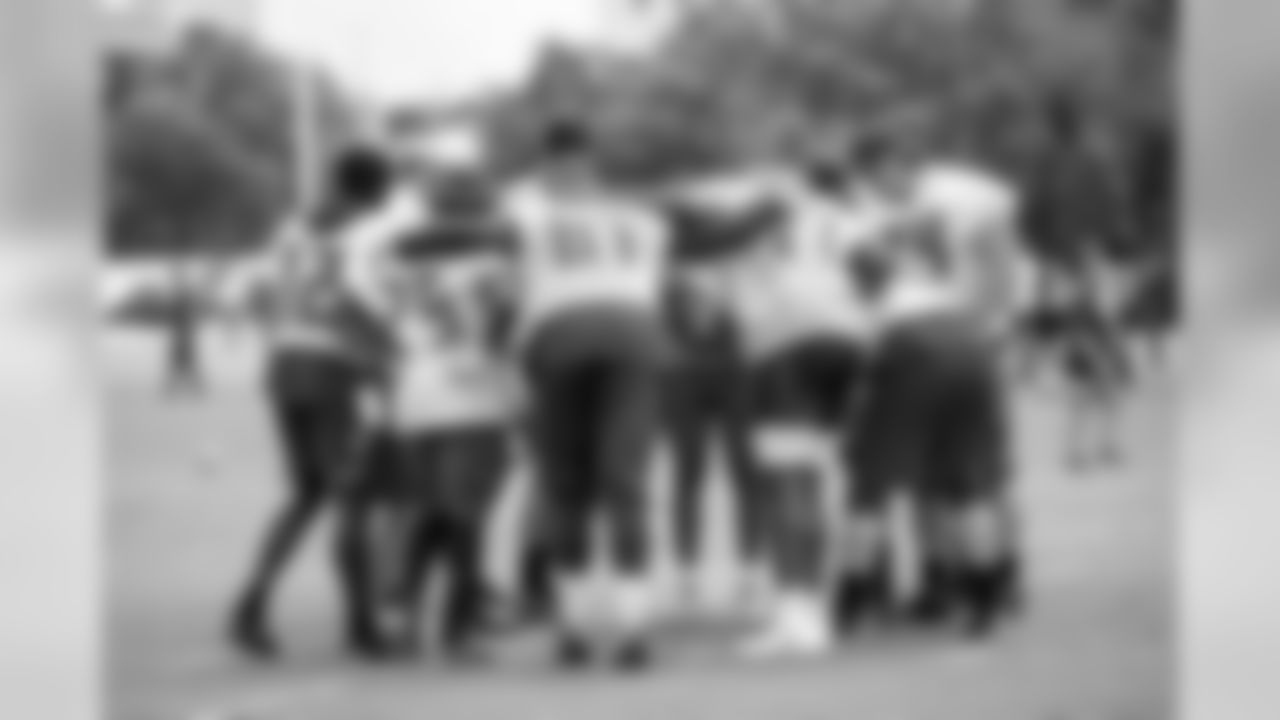
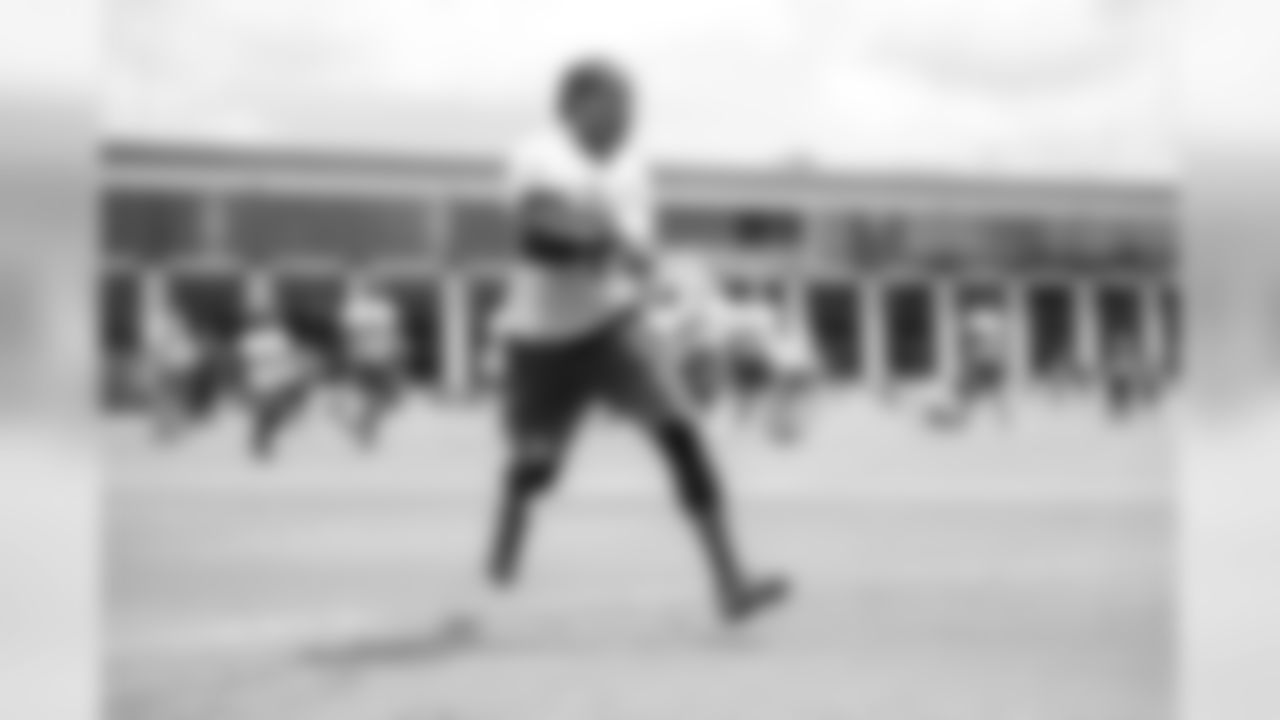
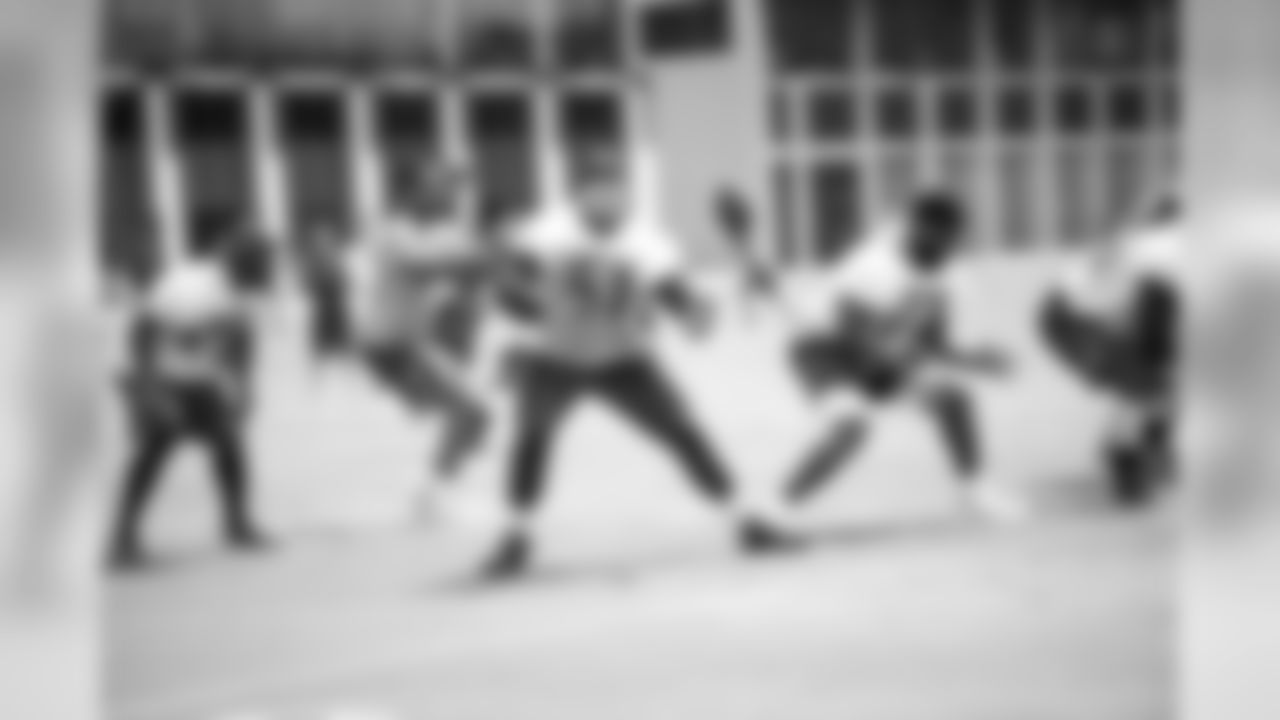
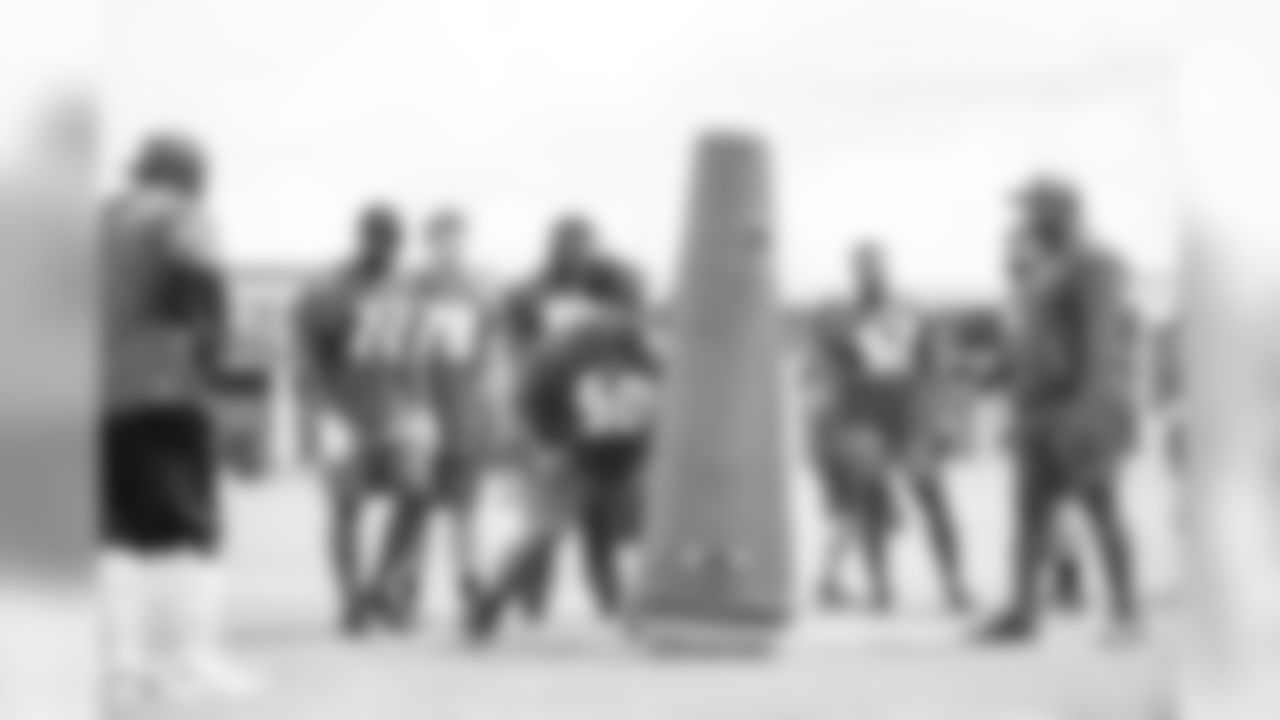
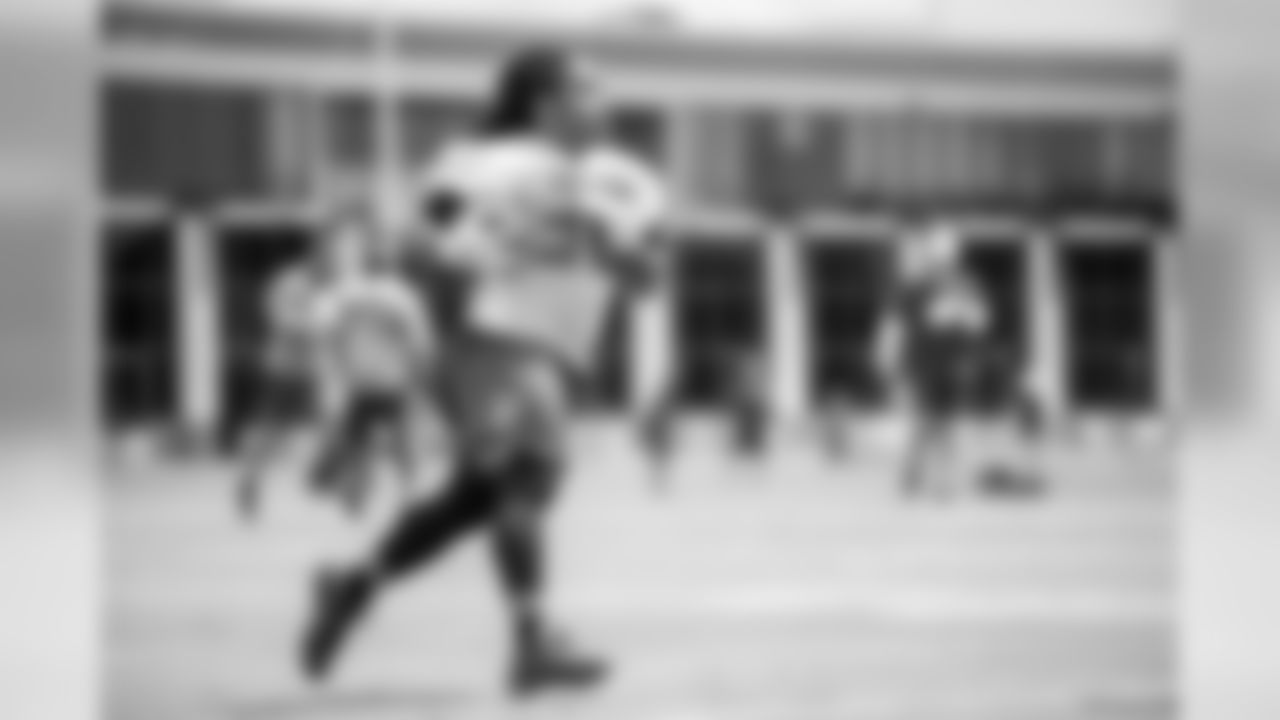
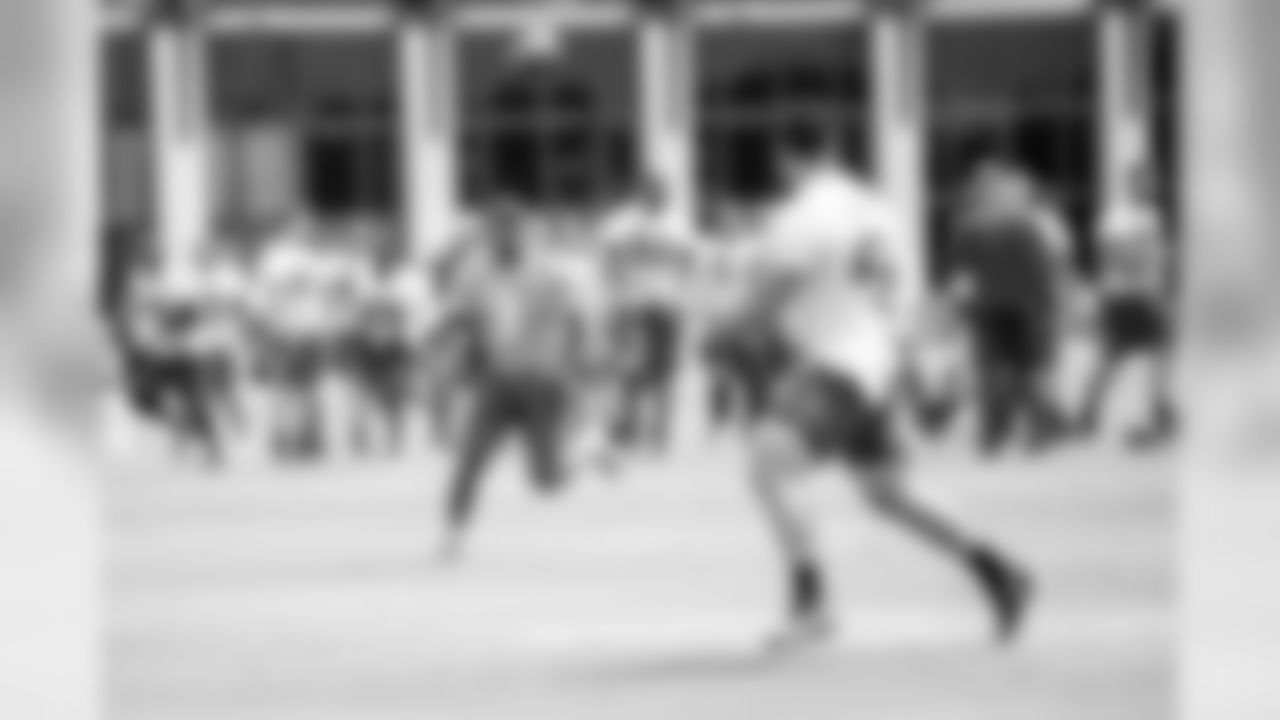
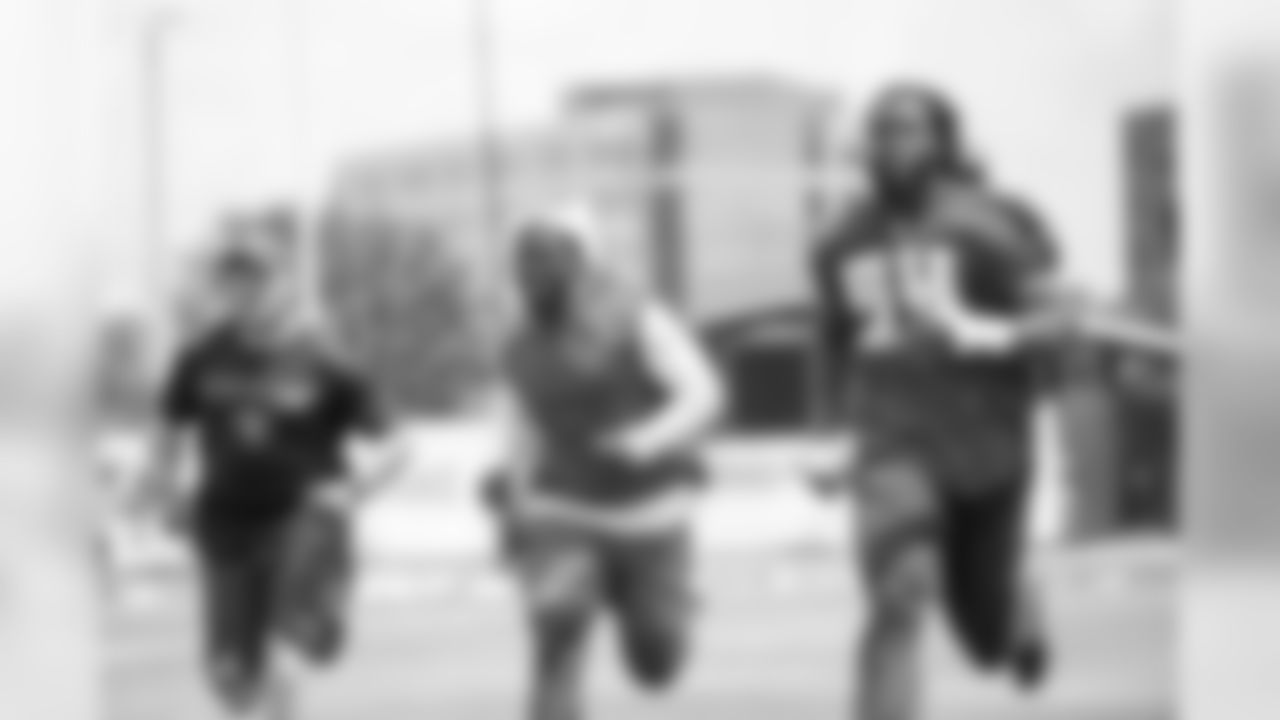

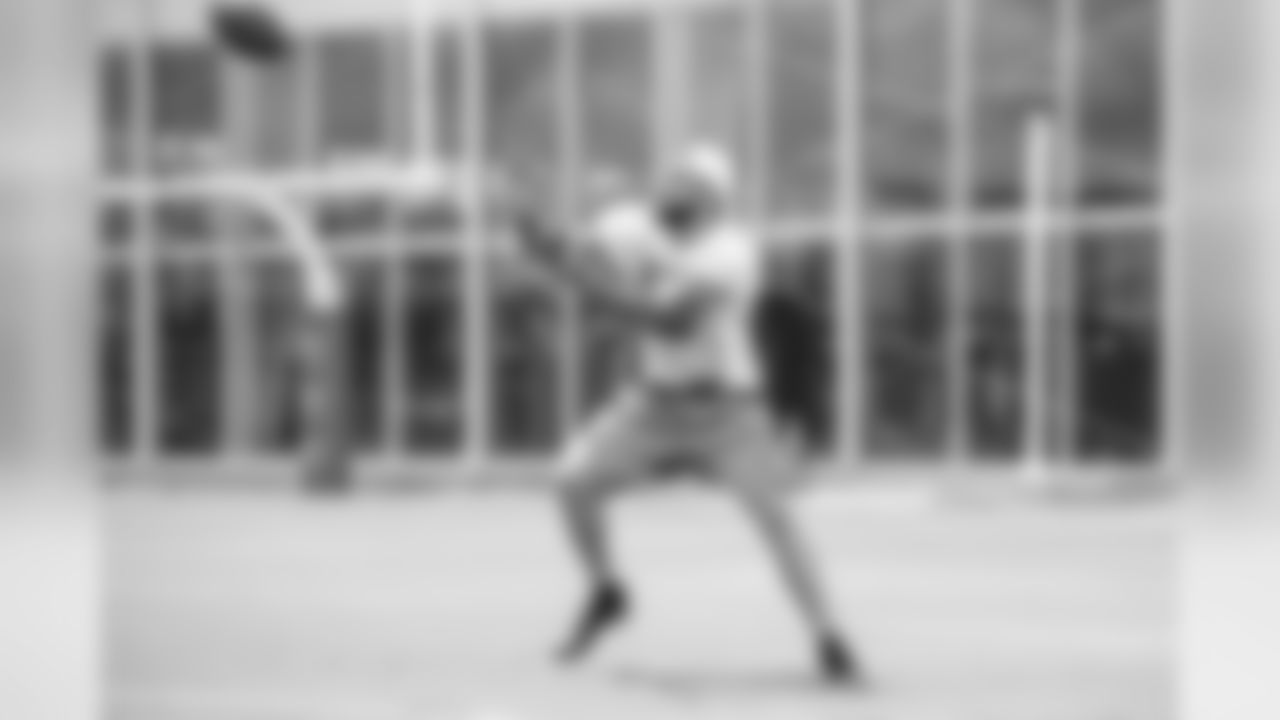
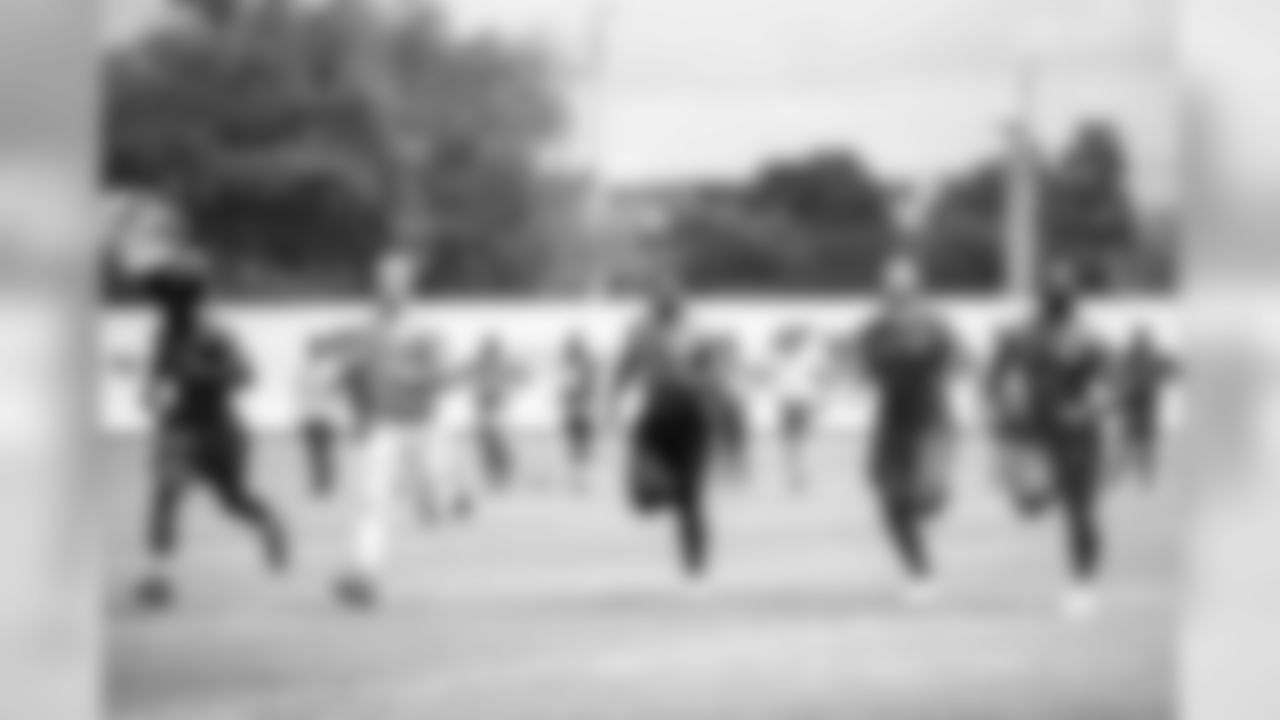
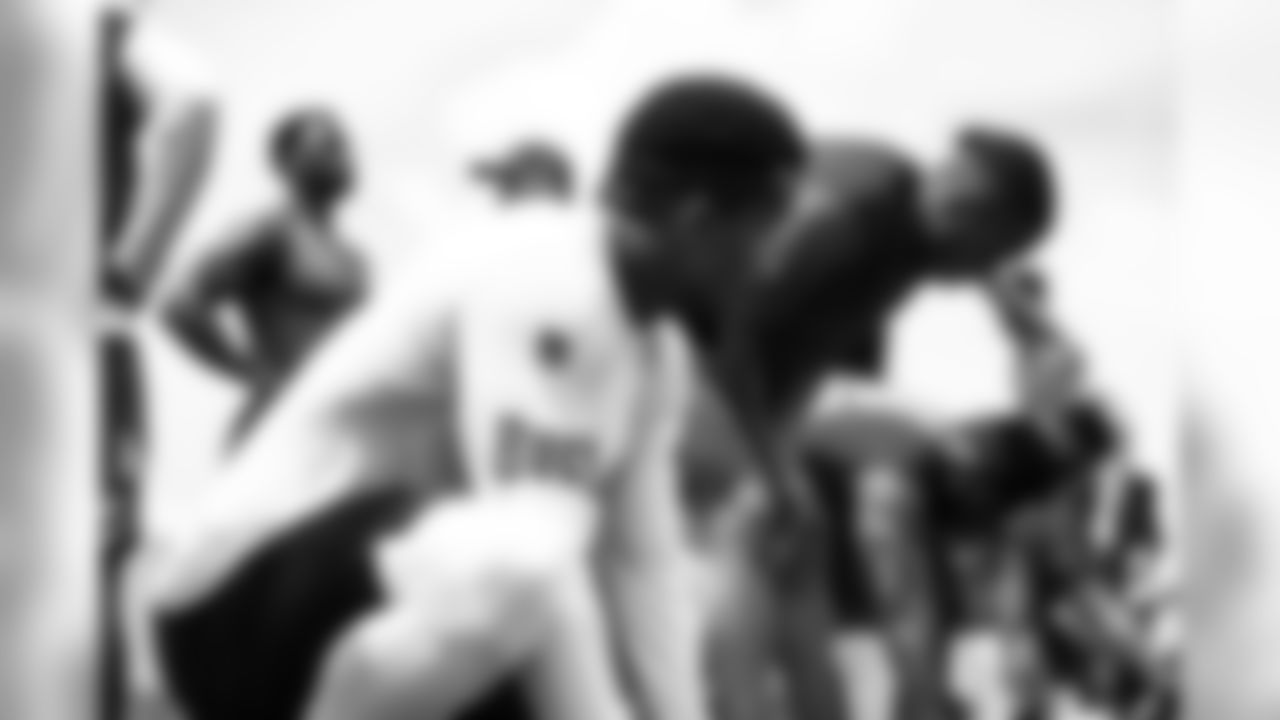
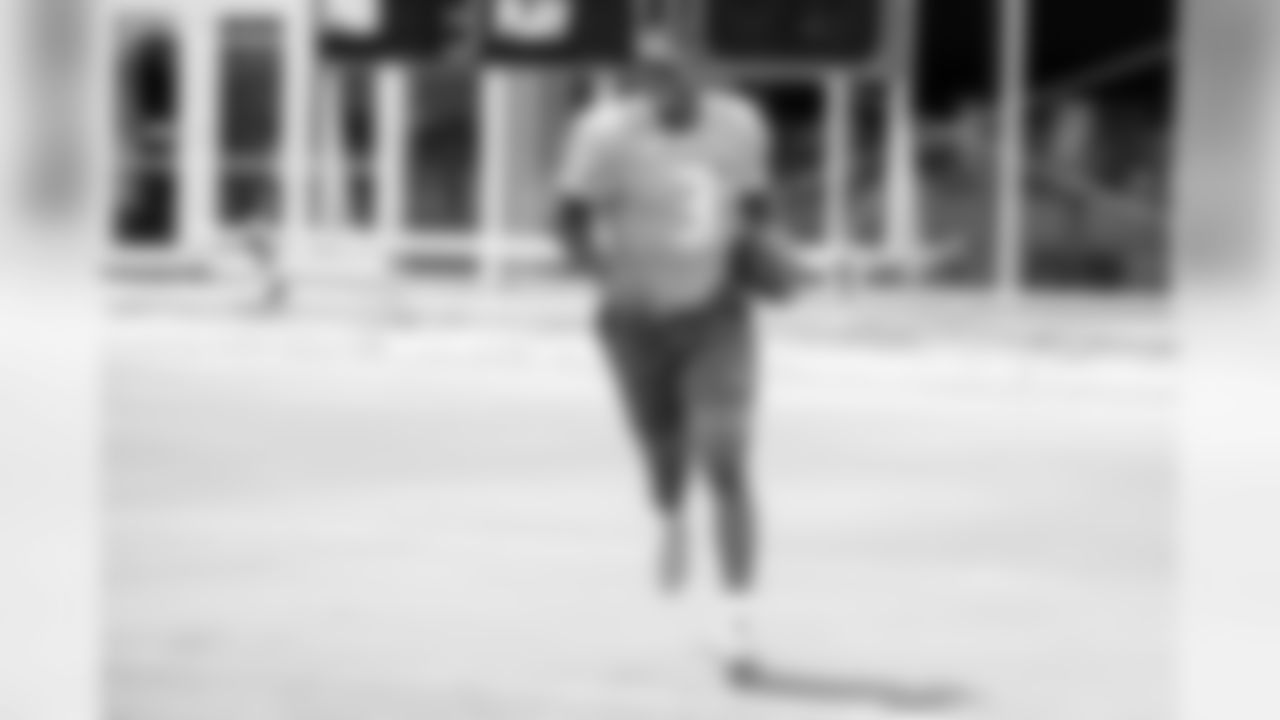
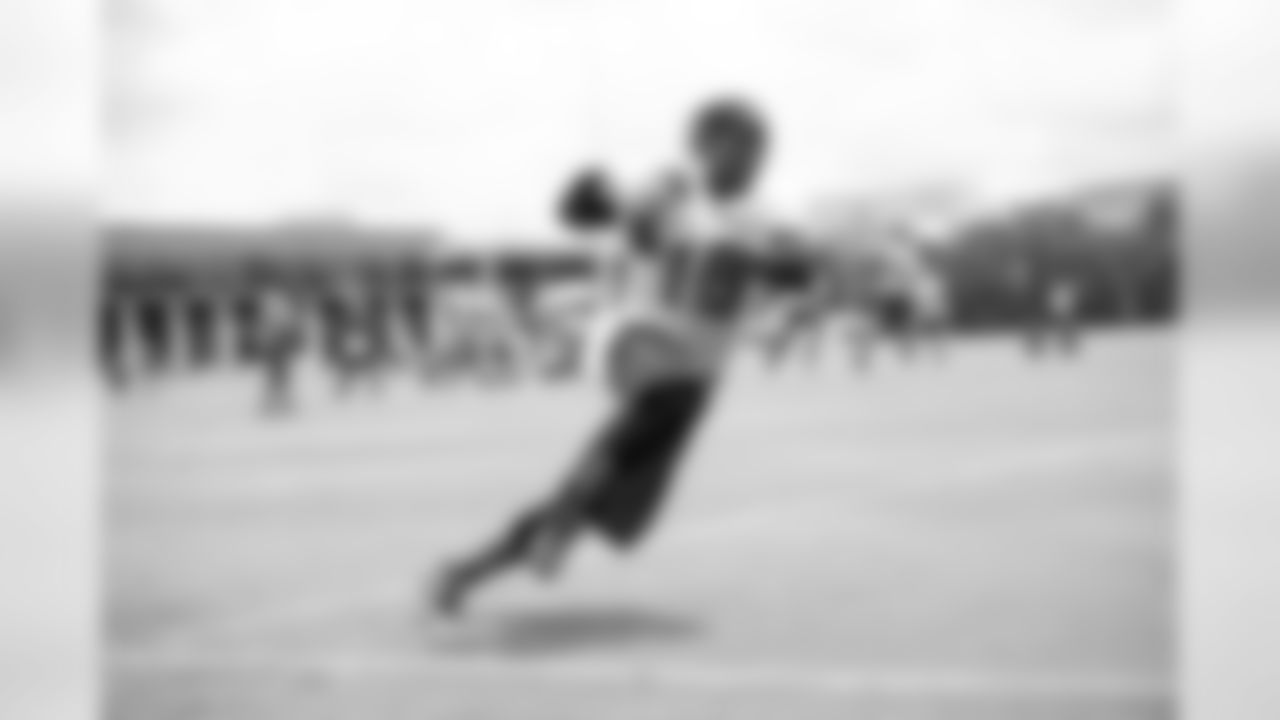


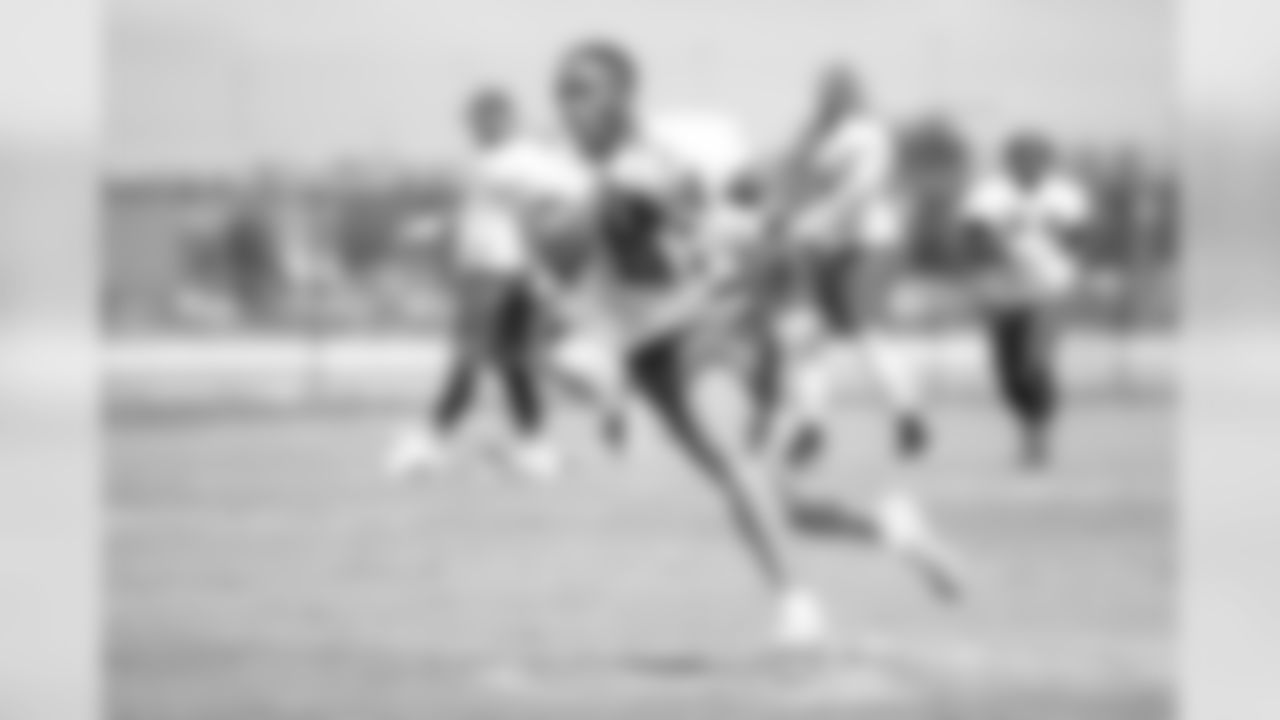


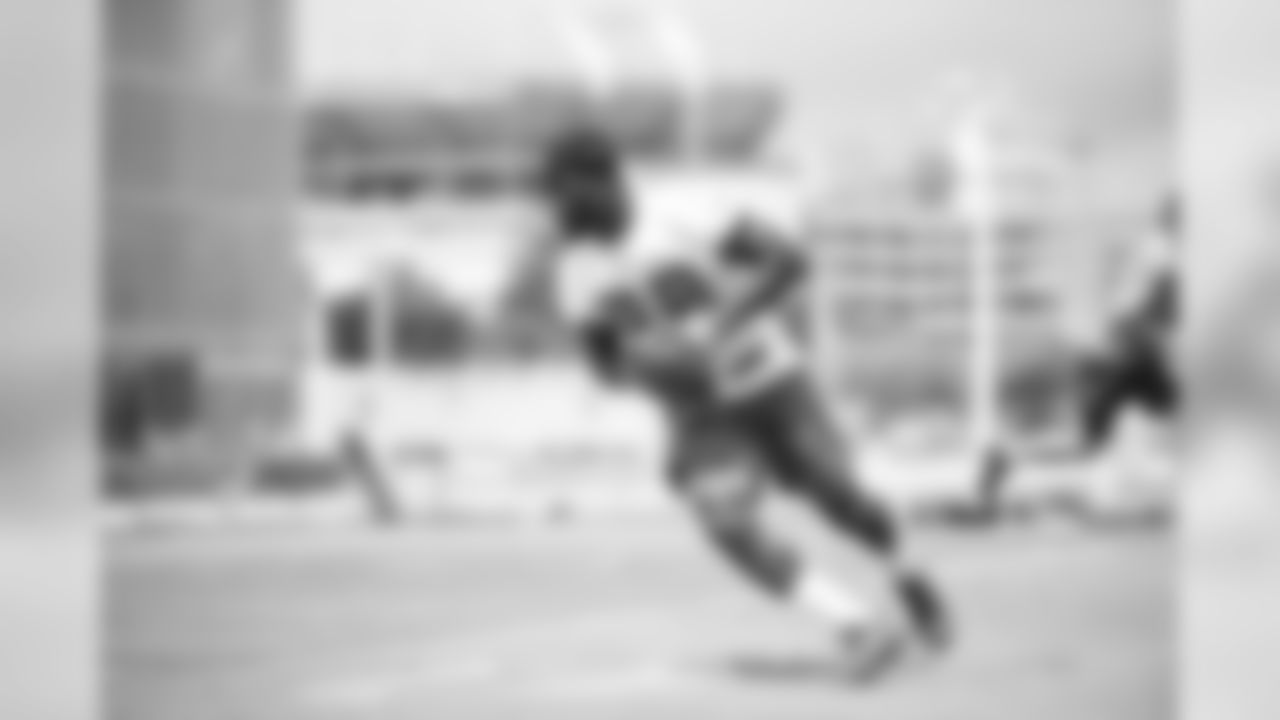
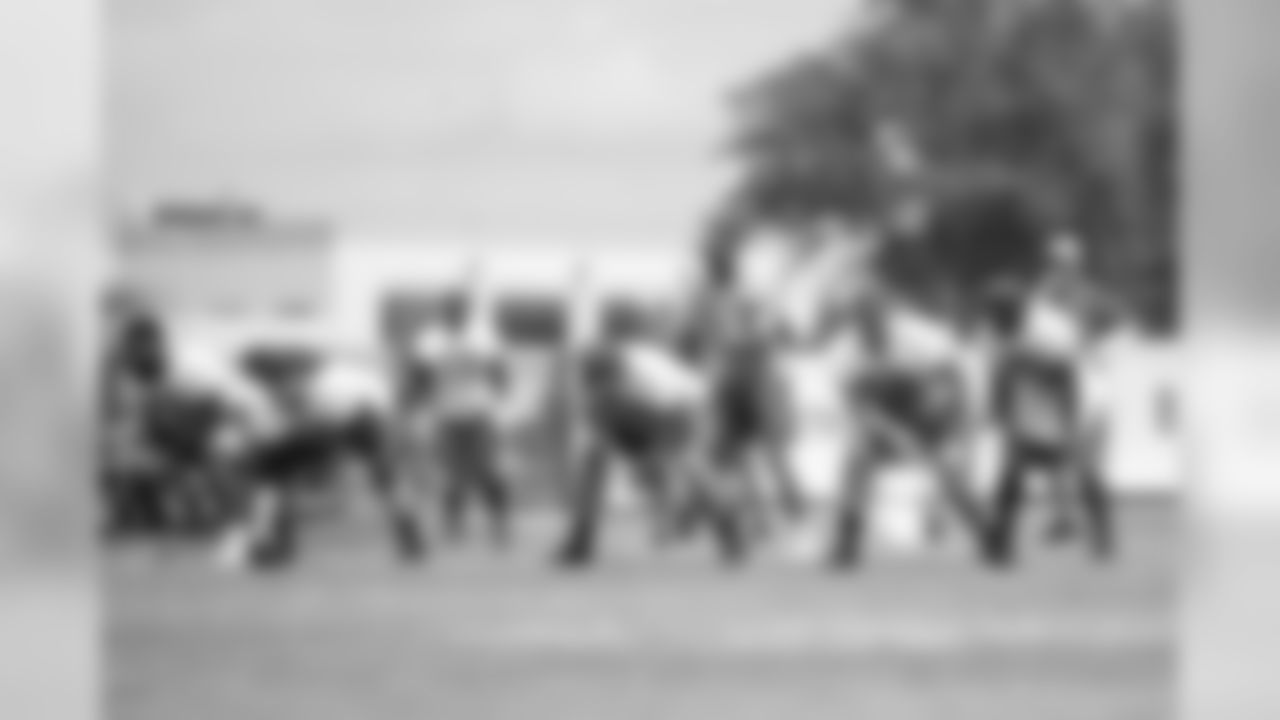


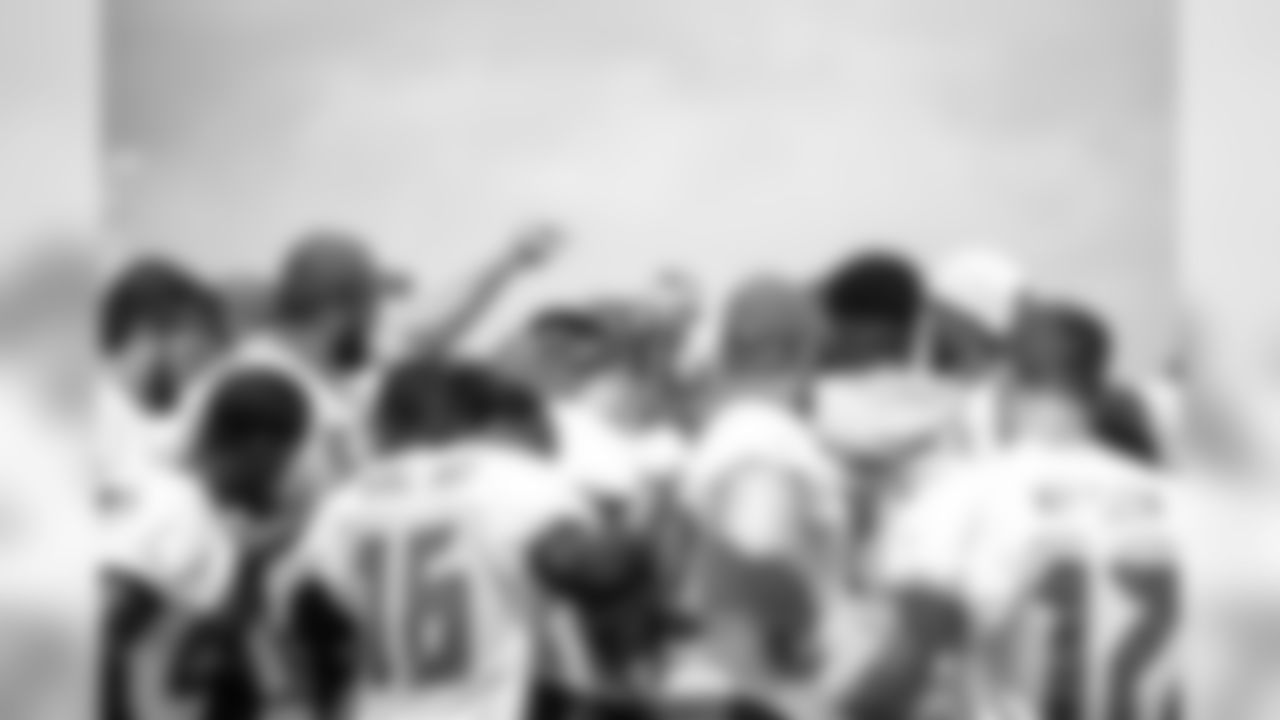
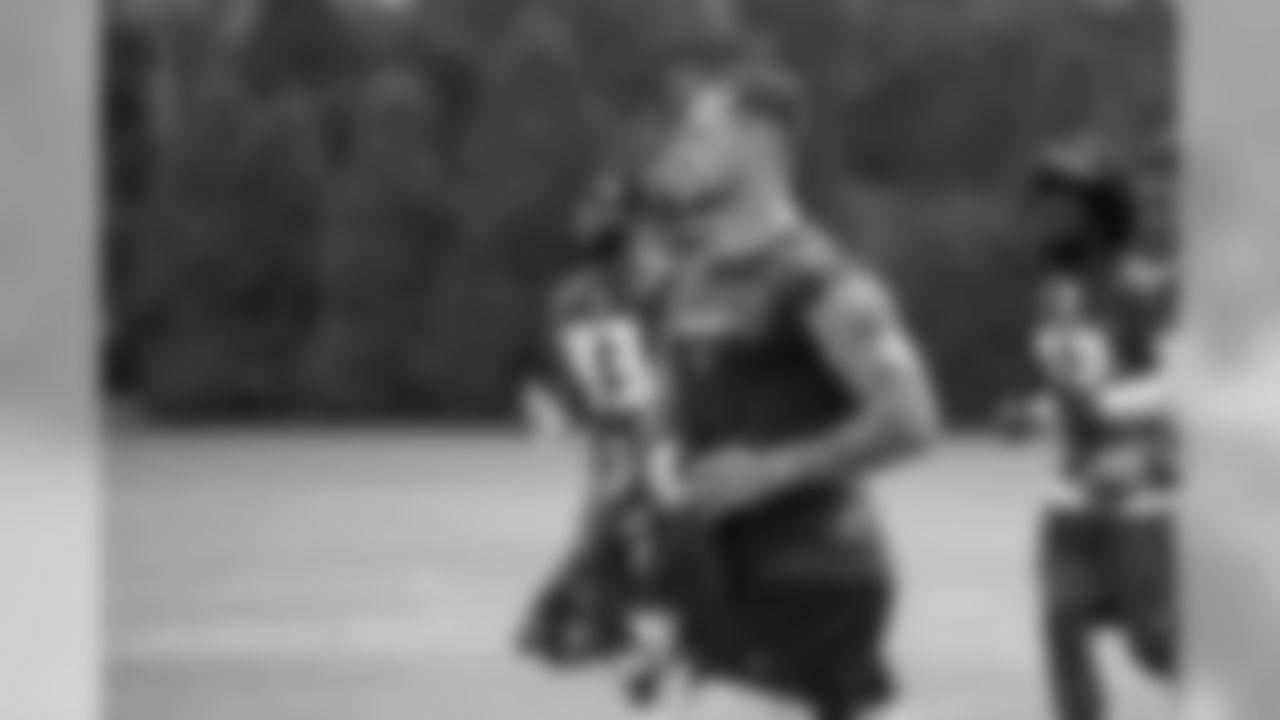

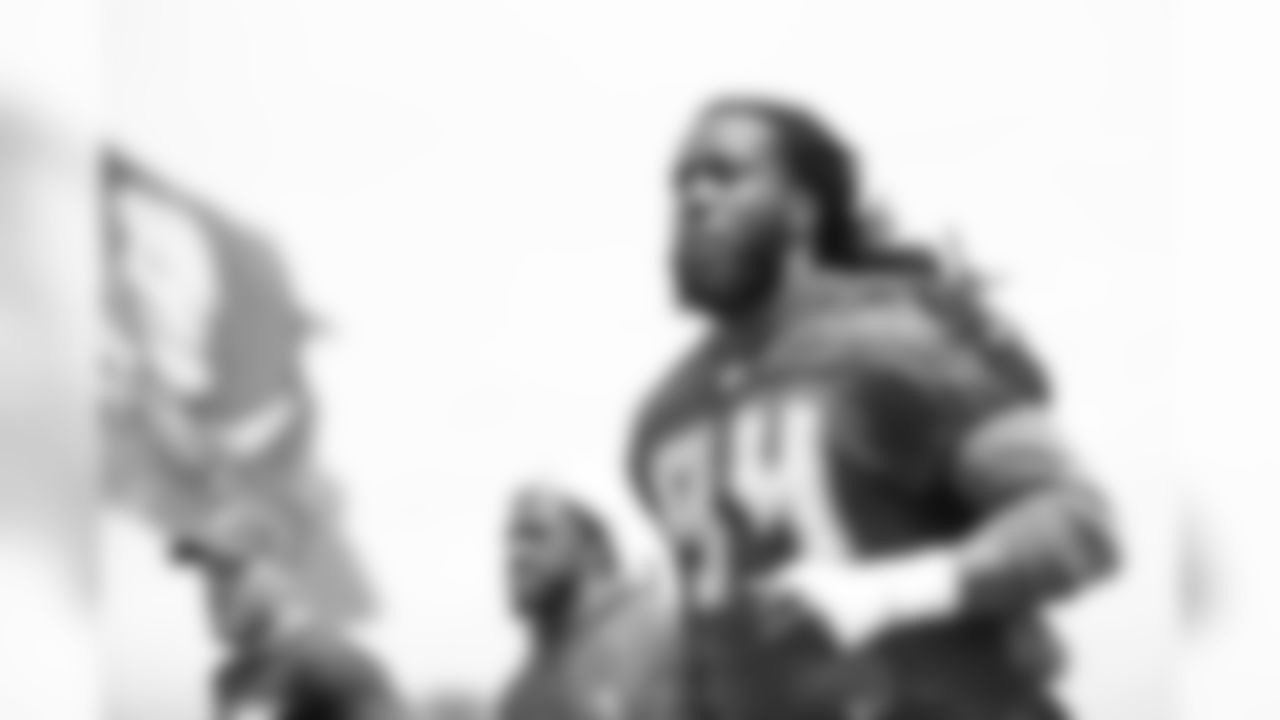
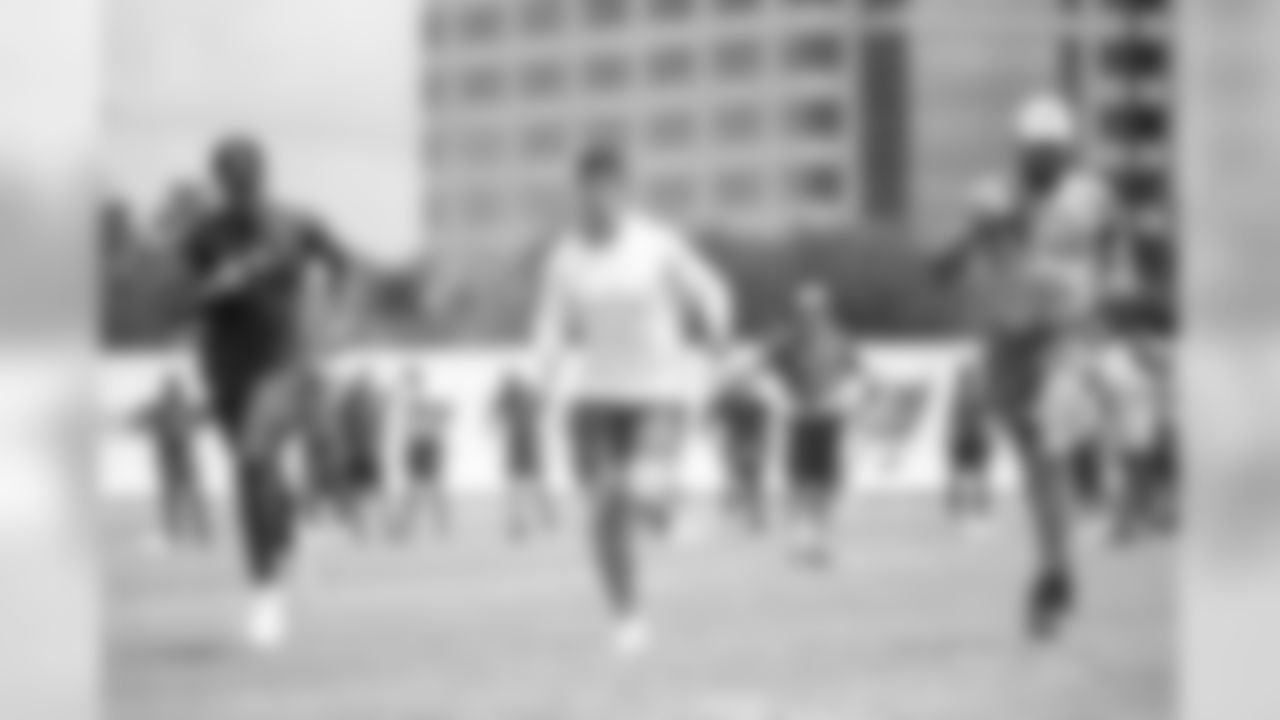
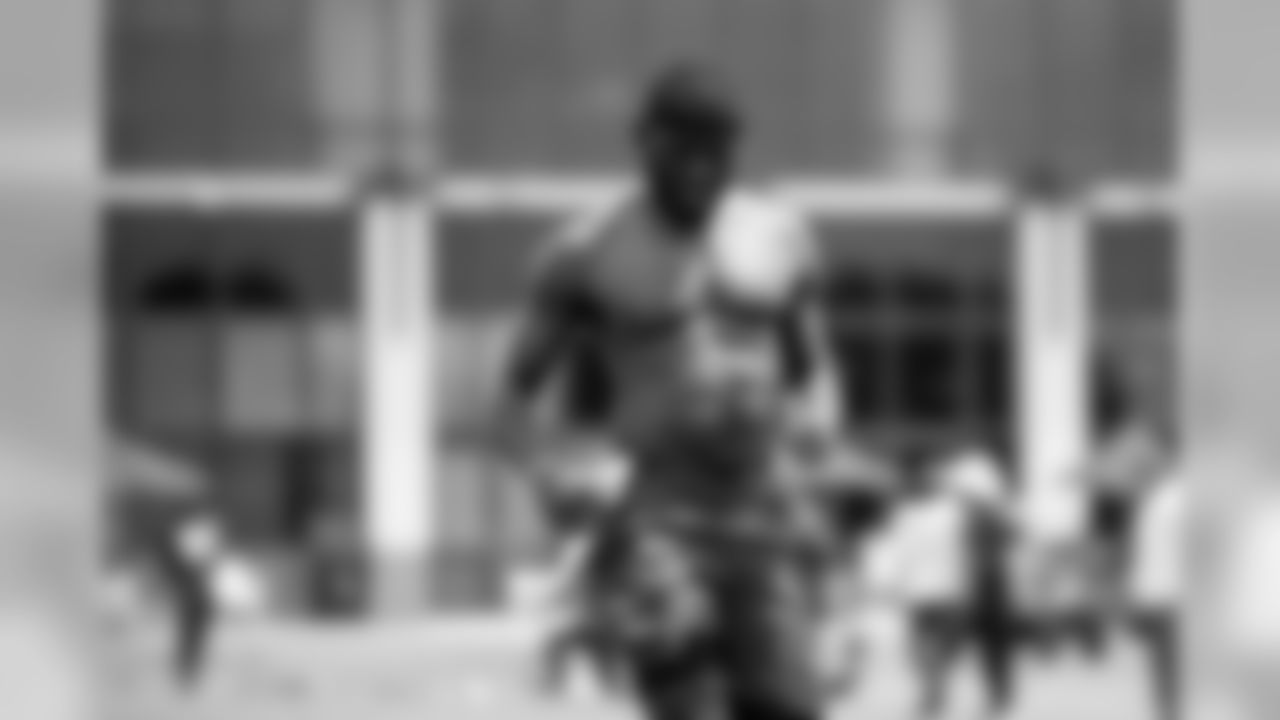
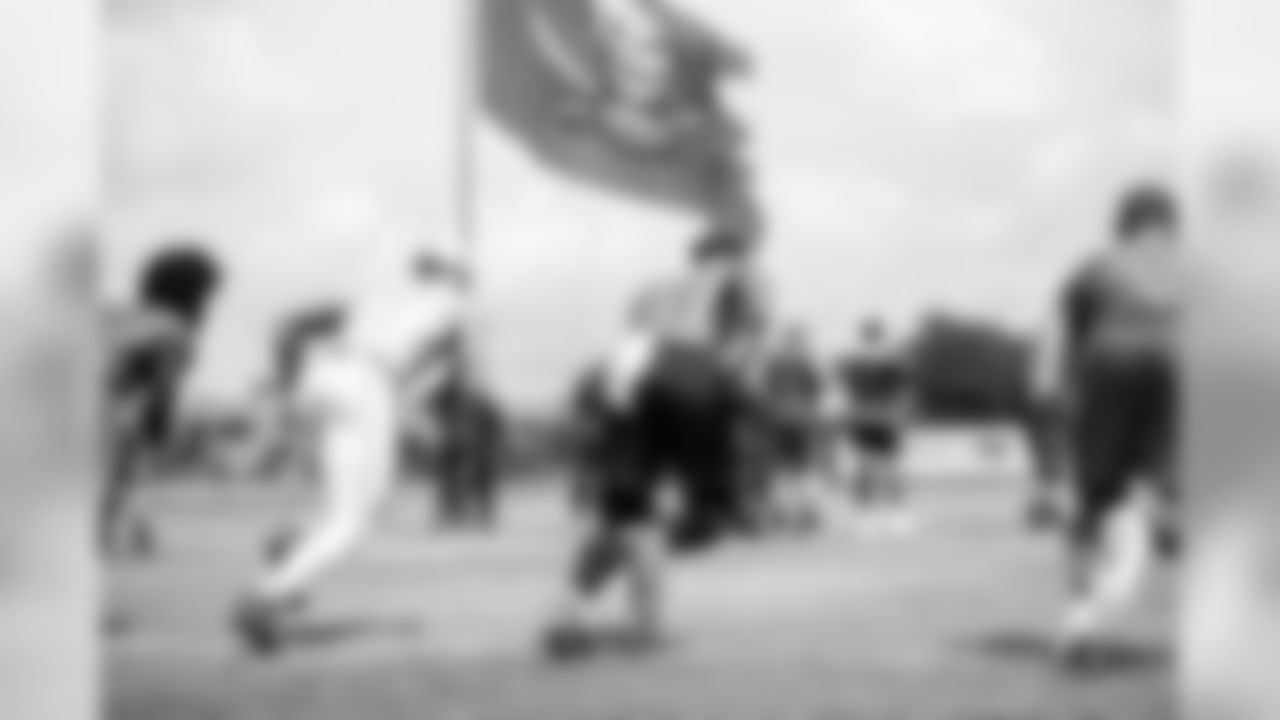


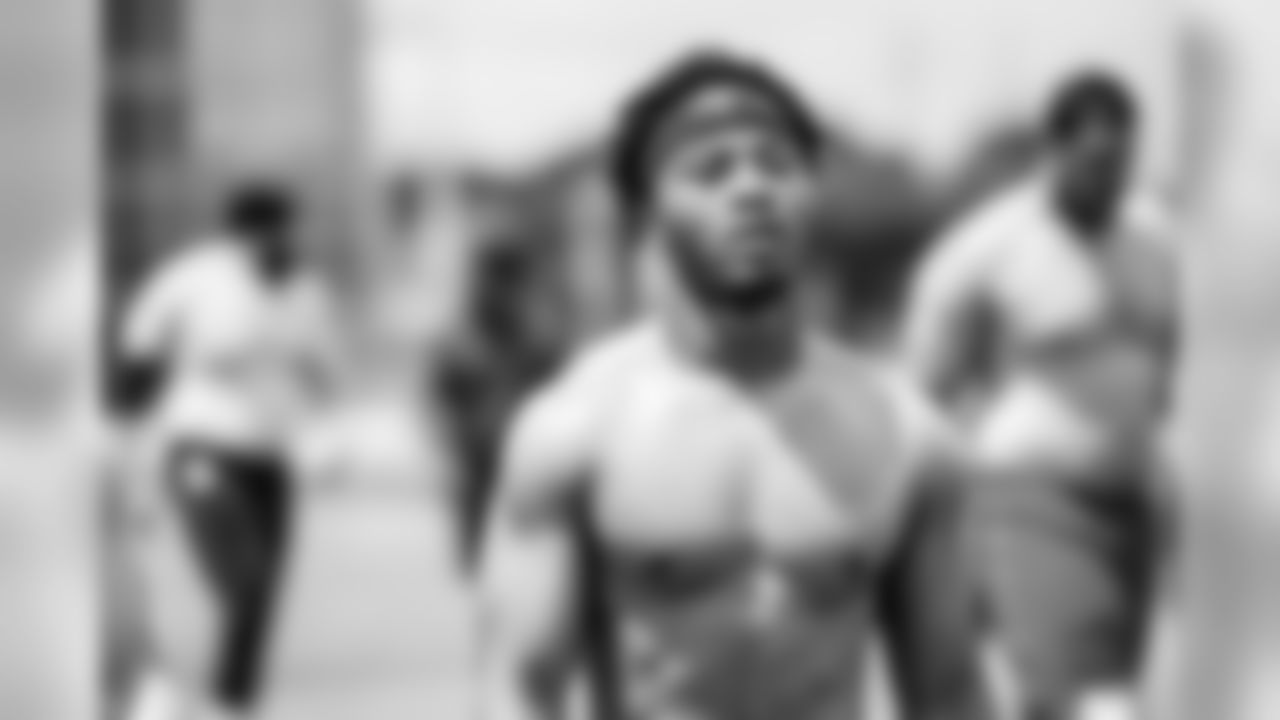
"Size-wise, he has good size but he'll probably put on some more pounds," said Spencer. "But mainly we like his agility, we like his ability to maybe that hit that long one every now and then. We'll see how it goes. But he's a fast learner. I like the way he's learning right now so I think he'll fit right in. He fits right in with the group right now."
Of course, the Buccaneers probably envisioned Jones becoming a lead back at some point in the NFL, and perhaps quickly, when they used a high pick on him. Spencer said he does envision Jones becoming a three-down back, though that involves working on the route-running and pass-catching skills that he didn't get much chance to use in the Trojans' offense. Spencer did like what he saw of Jones's pass-protection work at USC, which is essential for a young back getting on the field on third downs.
"Obviously, he's got some work to do in terms of being able to run certain pass routes, motioning around, catching the ball, but he can pick up the blitzes and things like that," said Spencer. "They didn't really ask him to do [much] in the passing game out there, but yeah we want him to be able to catch the ball because we have some things we'd like to give him with his speed."
Barber carried the ball 108 times for 423 yards and three touchdowns last season, averaging just under four yards per tote. He also caught 16 passes for 114 yards (7.1 avg.) which at least hints at some usefulness in that part of the game. Most of that came during the last five weeks as he graduated into the primary-back role. He averaged 4.3 yards per carry in that stretch and snared 12 of his 16 receptions. The Bucs think he can do even more.
"I think he has a high ceiling," said Spencer. "One of the things, this is his third year so he has a good feeling of what we're trying to do offensively. Peyton can catch the ball and he can run routes even though he is a good-sized back. Height-wise he's probably 5-10 but he's like a 230. That's a pretty good combination. I like the way he runs, I like his attitude, I like the way he's learning and being able to pick up things. Obviously he's in the mix so it will be interesting to see how it plays out."
Barber's more rugged running style could indeed be a perfect complement to Jones's explosiveness. While a 30 or 40-yard run can obviously charge up an offense, so can a player who is breaking tackles and fighting for every yard.
"Peyton gives you a different dimension in terms of two yards being four yards, four yards being six yards, six yards being eight yards – finishing off runs," said Offensive Coordinator Todd Monken. "There's something about a run that gets finished off that invigorates your team, a run along your sideline or a great block by a wideout or an effort play … or a guy that breaks a tackle. Those are things that I think Peyton brings that I think is part of a young player that you hope develops."
The Buccaneers will surely carry at least four tailbacks, as that's how many Head Coach Dirk Koetter likes to keep active on game days, particularly if one or more of them helps out on special teams. They might even carry five. Rodgers would be a very useful piece in that puzzle because he has shown he can produce as a lead back, he has owned the third-down back in a Koetter offense in the past in Atlanta and he has the team's trust for just about any job.
"When he gets in there he's able to make plays," said Spencer, who also described Rodgers as a second coach on the field. "He's a guy you can trust, you know he's going to be where he's supposed to be, when he's supposed to be there. And he can do a good job of doing it. That's one of the reasons why I really like having him. He's a good older guy that you can pull from, but also you can depend on him if you need to put him in there."
Sims was the Bucs' leading pass-catcher among running backs last year, and memories of his big 2015 season, in which he was healthy for all 16 games and cracked the 1,000-yards-from-scrimmage mark, is still somewhat fresh in the mind. He became an unrestricted free agent in March but chose to come back to his original team a couple months later. The Bucs certainly know the best ways to put his skills to use.
"We know that Chuck can block, we know that Chuck is tough," said Spencer. "Now is he a short-yardage guy? We know that he's not a short-yardage guy, but all the other things, Chuck's pretty good. Chuck's pretty good. He'll pick up the blitz, he knows where to go, he's got great hands, he can make people miss. So he has all those things. He doesn't have everything but he has enough to make it good for us. He's another guy that you can depend on, as he was our third-down guy. He's a guy that you can move around, get him matched up on guys, on linebackers, he's going to beat them."
The two other undrafted backs, Crossan and Wilson, will compete with Jones and the three veterans for one of the four spots, or perhaps even a fifth tailback spot if the Bucs choose to arrange their depth chart that way. Again, they have a chance to add even more variety to the backfield. Wilson, a smaller back (5-9, 185) with great speed, has already caught Spencer's eye.
"Oh, I like him a lot," said the coach. "Shaun, he's more like a true third down-type guy. You're going to split him out wide, do some of the things like we do with Chuck [Charles Sims]. Shaun's a quick learner. He's kind of been in sort of some of the offense that we've been in so he picks it up pretty good. So I'm looking forward to seeing what he can do when we really get the pads on, but I know he's going to do alright because he's tough and he's got a chip on his shoulder. He's another small guy; everybody told him all along coming up, 'You can't do this, you're too small for that.' He's just out to prove what he can do."
The Buccaneers have to prove they can run the ball quite a bit better than they have the last two years so that their very promising offense can really take off. That was clearly a priority for the team in 2018, as evidenced by the drafting of Jones with a premium pick and the targeting of center Ryan Jensen early in free agency. It remains to be seen just how the carries and passing targets will be divvied up in order to make that happen, but the Bucs are definitely excited about the variety of talent in their backfield.





















